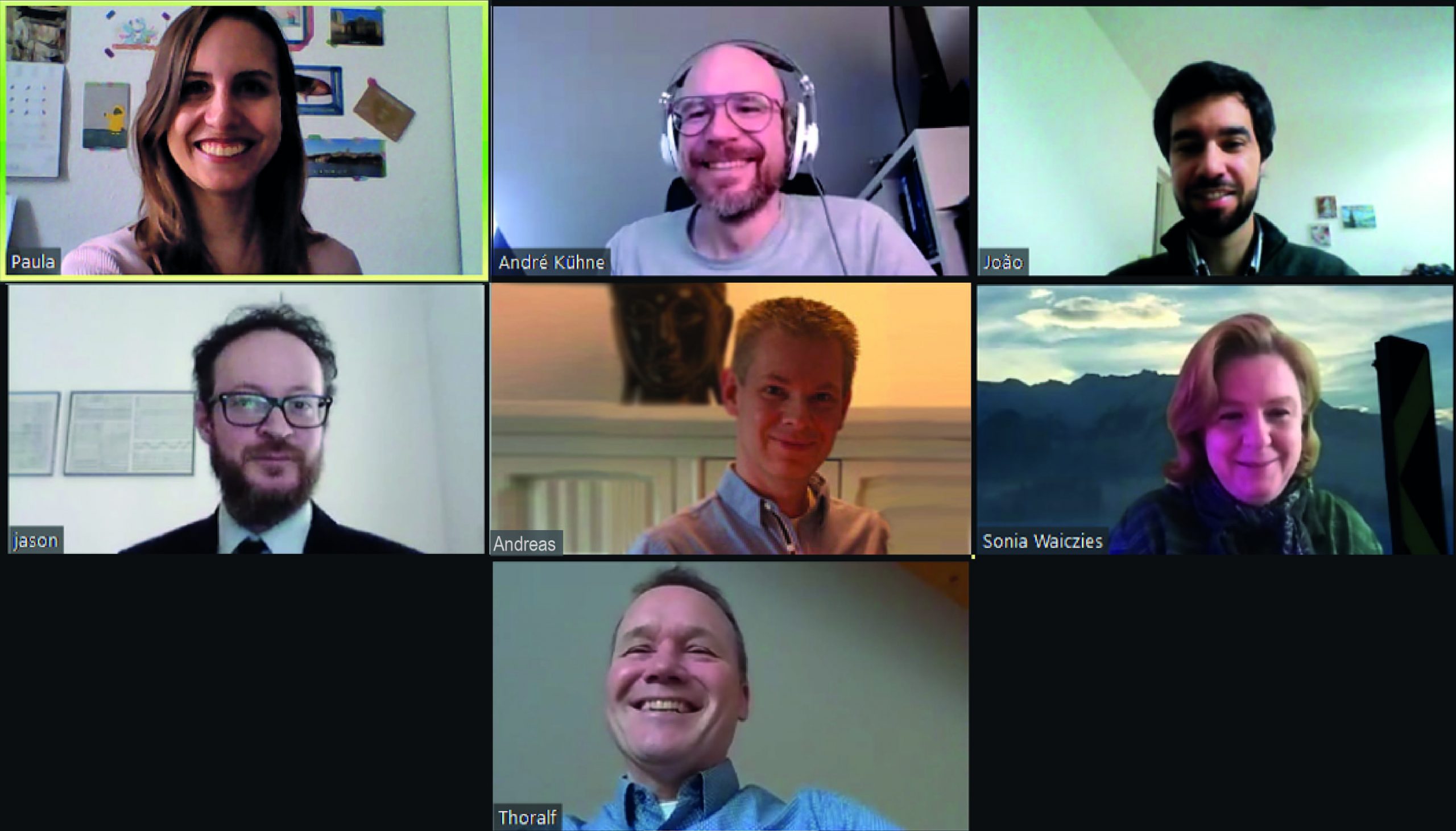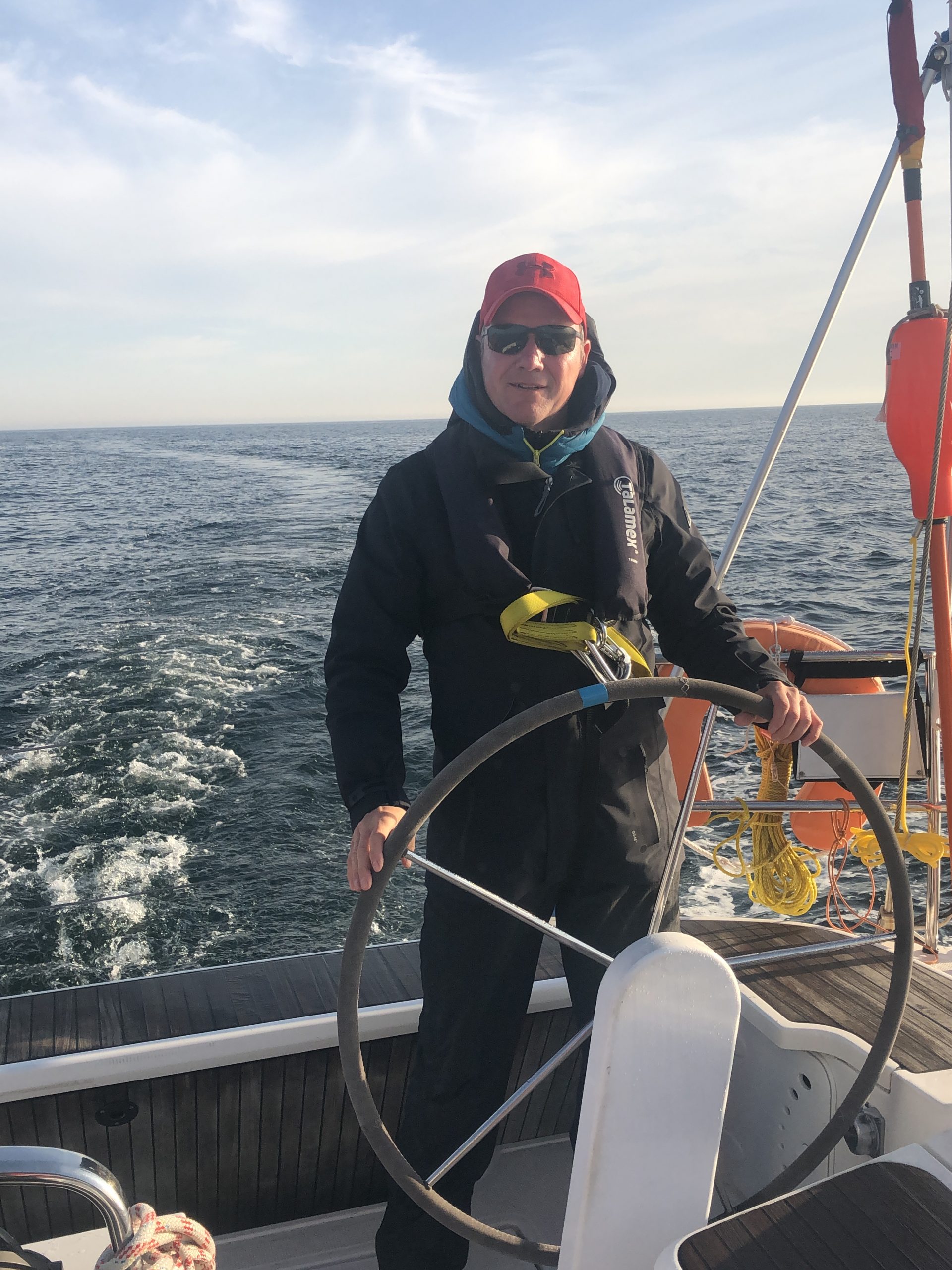By Mathieu Boudreau

This MRM Highlights Pick interview is with Paula Ramos Delgado and Thoralf Niendorf, researchers at the Berlin Ultrahigh Field Facility (B.U.F.F) in Berlin, Germany. Their paper is entitled “B1 inhomogeneity correction of RARE MRI with transceive surface radiofrequency probes” and it was chosen as this month’s Reproducible Research pick because, in addition to sharing their code and data, the authors also provided exemplary documentation in their GitHub software repository and inside their code.
MRMH: To start off, could you tell us about yourselves and your background?
Paula: I did my undergraduate degree in telecommunications engineering in Spain. Afterwards, I decided to go to Germany to do a Master’s of Science in photonics. In my second semester there, I took an elective course in biomedical imaging. The professor (Prof. Jürgen Reichenbach) explained the topic of MRI with such passion that it really left me thinking “Wow!”. I realized that this field offered a perfect combination of physics, engineering, electronics, image processing — everything I was interested in! And so, I asked him if I could do an internship in his group, and he said yes. After that, I moved to Bremen to attend the Fraunhofer Institute, where I worked with Prof. Matthias Günther and team, and also did my internship and Master’s thesis. I then saw an advertisement for this PhD position at the Berlin Ultrahigh Field Facility, and Professor Thoralf Niendorf and Dr. Andreas Pohlmann invited me to do my PhD here. And so, here I am!

Thoralf: I have been a member of ISMRM since 1992. My career has evolved through different stages, and included positions in academia and industry. Currently, I am head of the Berlin Ultrahigh Field Facility, primarily focusing on 7T MRI in humans, and also preclinical imaging at 9.4 Tesla. My background is in MR physics, but the development of applications to better understand diseases, and also the biology behind them, is where my heart really lies. I also recently decided to channel much of my passion and dedication into multi-modality, multi-scale imaging, also focusing strongly on synergistically connecting imaging with data science.
MRMH: Could you give us an overview of the paper?
Paula: So, the use of surface RF coils is common practice both in clinical and in preclinical MRI. This is typically done with the volume coil for transmit and a receive-only surface coil. But recently, the market has seen a growing interest in transceiver technology (dual transmit and receiver coils). The caveat for transceive surface coils is that they have an inhomogeneous B1 field, and so they don’t provide the right signal intensity for quantification. So, to image X-nuclei in future applications, you need a method to correct the B1 bias. This is typically done with an analytical signal intensity equation that relates the signal intensity to the flip angle and T1. But for complex sequences like RARE, the very long train of echoes makes this strategy impossible, because there is no analytical signal equation. And so, in this paper, we implemented and validated three different B1 correction methods for complex sequences for which no analytical signal equation is available such as RARE. One is a sensitivity method that was previously established was an intensity correction for surface coils; another is based on a signal intensity model, instead of an equation, to correct for B1+ inhomogeneity, and the third is a combination of both that and the sensitivity method. We showed that image homogeneity improved tremendously using these techniques. We validated the quantification and T1 contrast, and showed that they reduced the errors to under 10%. We’re very happy with the results.
Thoralf: I got excited about this project for three reasons. The first is that I’ve been interested in RARE imaging since the time of my PhD thesis. The second is that we are now designing, evaluating, validating and applying several versions of multi-transmit receive RF arrays for human MRI at 7T. And third, I always like to balance preclinical studies with clinical studies, and Paula’s project is a very nice example of how this can be done. It was so lucky we found Paula, who is and was the right person to address this specific issue and find a solution for it, which she did elegantly here.

MRMH: Why is this work important?
Paula: Like I said earlier, the number of transceive surface RF coils is increasing, both for clinical and for preclinical MRI. So, I really hope that anyone using these will consider the work we did here. I have spoken with many people who have transceive cryoprobes, and it really pains me every time they say they can’t use their coils for quantitative measurements. It really is my hope that, moving forward, people will be able to use their transceive coils (which have incredible SNRs) to boost their applications, especially quantitative applications.
Thoralf: Yeah, I think Paula’s work is a major forward leap towards parametric mapping with transceive coils, including quantification. Paula has shown, by example, how to approach this for T1 mapping. Meanwhile, we have also applied her technology for fluorine MRI, which has very low sensitivity but very high specificity.
MRMH: What advice do you have for people who would like to get started with this technique?
Paula: When I started, I wanted to use the best B1 mapping techniques. But in the end, I think just using what you already have available is good enough for most people and most applications . We ended up using a double angle method for B1 mapping, which works quite well, even though it may not be on a par with more modern techniques, like Bloch-Siegert shift. I would also recommend trying our hybrid method for B1 correction first, because it yielded the best results for us, but of course the sensitivity correction is very accurate and easier to implement.
Thoralf: My advice is really simple, and it’s not meant to sound arrogant. I really would urge people to read the paper. It was written to read like a recipe from a cookbook, and Paula and her team put a lot of effort into describing every single step in great detail. Our ultimate goal was to promote reproducibility, and for this reason, the team also decided to make the code and data available through GitHub. We believe that this is the best way to disseminate the results, but also to share the technology with other sites.

MRMH: Is there anything else that you’d like to share with our readers?
Thoralf: I’d just like to reiterate that the idea of reproducibility is really close to our hearts, and we really have tried to walk the talk here and live up to the mission of reproducibility. I recently had a conversation with the head of our PhD and postdoc offices here, and it became very clear that no matter what kind of science you’re doing, it’s all about reproducibility. This is, indeed, how we give back to society. I might even go so far as to suggest that journals like this one should, in the future, move away from encouraging voluntary sharing of code and data and instead make it a mandatory requirement, because we firmly believe that this really is an essential “ingredient” for achieving reproducibility. I understand why it’s been voluntary up to this point, but I would love to see it become mandatory in the long run.




